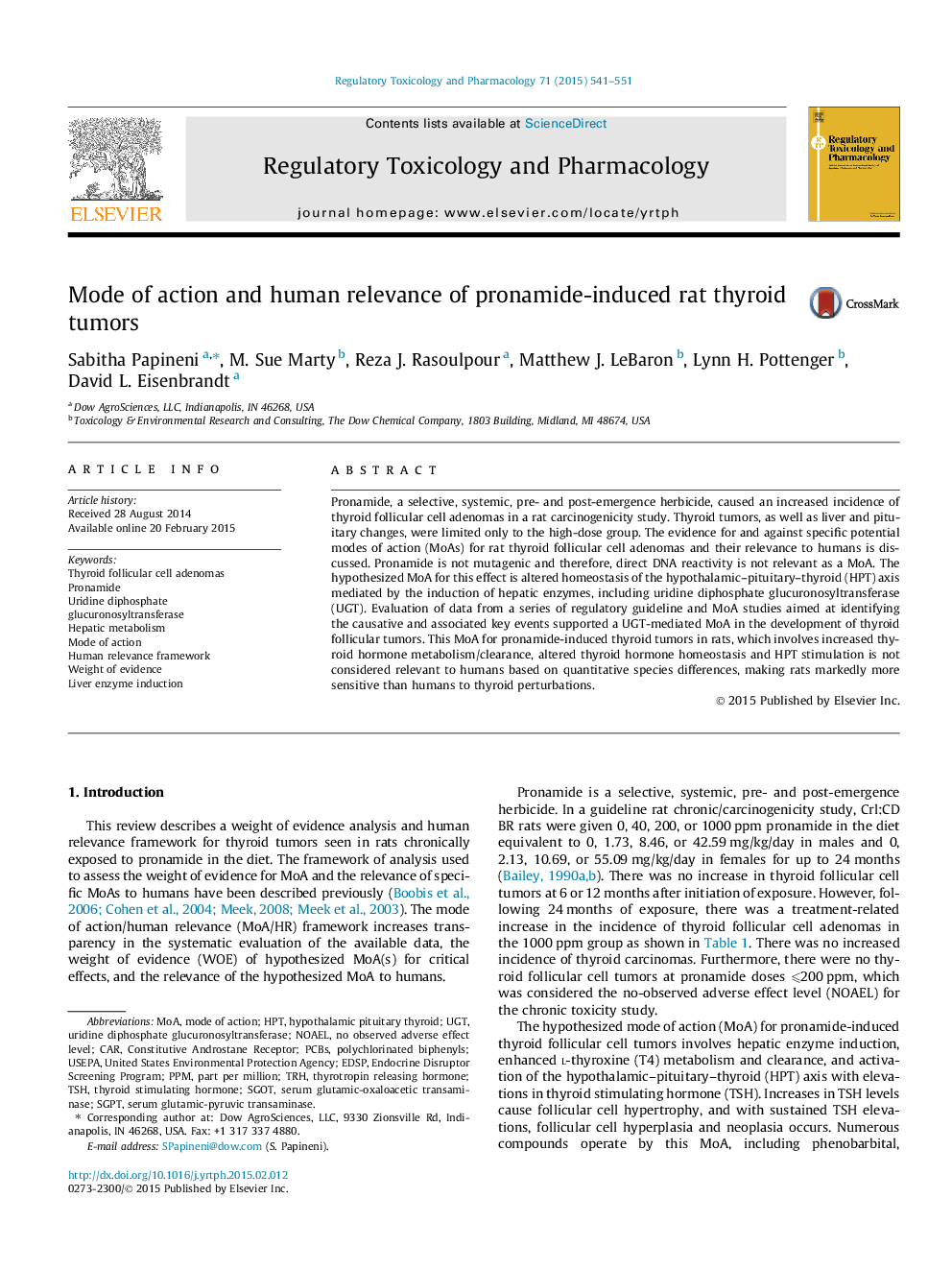| کد مقاله | کد نشریه | سال انتشار | مقاله انگلیسی | نسخه تمام متن |
|---|---|---|---|---|
| 5856671 | 1131980 | 2015 | 11 صفحه PDF | دانلود رایگان |
- Pronamide is not mutagenic.
- Genotoxicity is refuted as a mode of action (MoA) for induction of thyroid tumors.
- Pronamide induces a uridine diphosphate glucuronosyltransferase (UGT) MoA.
- UGT-mediated MoA causes enhanced thyroid hormone clearance and altered homeostasis.
- UGT-mediated MoA not relevant to humans, due to quantitative species differences.
Pronamide, a selective, systemic, pre- and post-emergence herbicide, caused an increased incidence of thyroid follicular cell adenomas in a rat carcinogenicity study. Thyroid tumors, as well as liver and pituitary changes, were limited only to the high-dose group. The evidence for and against specific potential modes of action (MoAs) for rat thyroid follicular cell adenomas and their relevance to humans is discussed. Pronamide is not mutagenic and therefore, direct DNA reactivity is not relevant as a MoA. The hypothesized MoA for this effect is altered homeostasis of the hypothalamic-pituitary-thyroid (HPT) axis mediated by the induction of hepatic enzymes, including uridine diphosphate glucuronosyltransferase (UGT). Evaluation of data from a series of regulatory guideline and MoA studies aimed at identifying the causative and associated key events supported a UGT-mediated MoA in the development of thyroid follicular tumors. This MoA for pronamide-induced thyroid tumors in rats, which involves increased thyroid hormone metabolism/clearance, altered thyroid hormone homeostasis and HPT stimulation is not considered relevant to humans based on quantitative species differences, making rats markedly more sensitive than humans to thyroid perturbations.
Journal: Regulatory Toxicology and Pharmacology - Volume 71, Issue 3, April 2015, Pages 541-551
